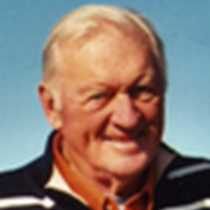Cape Disappointment, Fort Clatsop and Astoria
Lindblad Expedition guests, staff, and crew must live charmed lives. Sun breaks welcomed everyone to the picturesque dock and fishing port of Ilwaco, Washington this morning. After breakfast, guests motored to the dramatic heights of Cape Disappointment (named by Captain John Meares in 1788 when tides and rough seas prevented him from entering the River of the West) to visit the Lewis & Clark Interpretive Site. A stage-by-stage exhibition of the Corps’ westward voyage was on display here, followed by a brief ranger presentation. This dramatically sited complex overlooks the wild Columbia River mouth, providing occasional glimpses of the legendary Columbia bar – the relentless buildup of sand and silt at the river’s mouth. Several athletic guests walked to the nearby Cape Disappointment lighthouse. The historian and naturalists provided occasional motorcoach narration about the region, including the fishing economy, local rain forest flora, Native presence, and maritime tales.
Following lunch, most guests walked to the nearby world-class Columbia River Maritime Museum. Several guests began exploring the inviting streets and byways of Astoria, the oldest (1811) American town west of the Rocky Mountains. About 3:00 PM one motor coach took a contingent to Fort Clatsop; the other coach drove guests to the Astoria Column atop Coxcomb Hill.
Despite the recent incineration of replica Fort Clatsop (circa 1955: believed caused by ashes from one of the fireplaces) visitors were provided a special tour of the site with ranger narration. That narration included an interesting description of the archeological work being done at the cleared burn site in preparation for re-building. The 30-minute film “They Proceeded On” was shown in the Administration Building theater and the river’s best Lewis & Clark bookstore was busy. To match conditions experienced by the Corps in 1805-1806, late afternoon rain fell and the skies darkened.
Captain’s cocktails and dinner ended the long day, but the theme of Lewis & Clark remained omnipresent. Each of the ten days, beginning in Missoula, Montana, introduced aspects of the Corps’ adventures, embellished by Jeffersonia, Native relations, local contemporary history, and old-fashioned fun.
Lindblad Expedition guests, staff, and crew must live charmed lives. Sun breaks welcomed everyone to the picturesque dock and fishing port of Ilwaco, Washington this morning. After breakfast, guests motored to the dramatic heights of Cape Disappointment (named by Captain John Meares in 1788 when tides and rough seas prevented him from entering the River of the West) to visit the Lewis & Clark Interpretive Site. A stage-by-stage exhibition of the Corps’ westward voyage was on display here, followed by a brief ranger presentation. This dramatically sited complex overlooks the wild Columbia River mouth, providing occasional glimpses of the legendary Columbia bar – the relentless buildup of sand and silt at the river’s mouth. Several athletic guests walked to the nearby Cape Disappointment lighthouse. The historian and naturalists provided occasional motorcoach narration about the region, including the fishing economy, local rain forest flora, Native presence, and maritime tales.
Following lunch, most guests walked to the nearby world-class Columbia River Maritime Museum. Several guests began exploring the inviting streets and byways of Astoria, the oldest (1811) American town west of the Rocky Mountains. About 3:00 PM one motor coach took a contingent to Fort Clatsop; the other coach drove guests to the Astoria Column atop Coxcomb Hill.
Despite the recent incineration of replica Fort Clatsop (circa 1955: believed caused by ashes from one of the fireplaces) visitors were provided a special tour of the site with ranger narration. That narration included an interesting description of the archeological work being done at the cleared burn site in preparation for re-building. The 30-minute film “They Proceeded On” was shown in the Administration Building theater and the river’s best Lewis & Clark bookstore was busy. To match conditions experienced by the Corps in 1805-1806, late afternoon rain fell and the skies darkened.
Captain’s cocktails and dinner ended the long day, but the theme of Lewis & Clark remained omnipresent. Each of the ten days, beginning in Missoula, Montana, introduced aspects of the Corps’ adventures, embellished by Jeffersonia, Native relations, local contemporary history, and old-fashioned fun.




